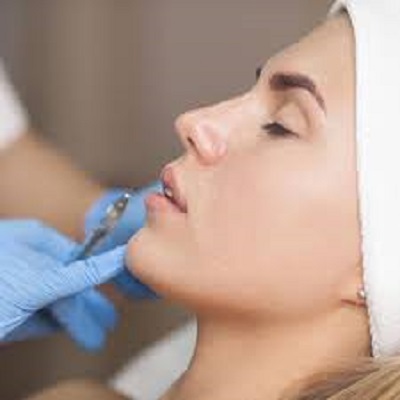Dermal fillers have become increasingly popular for achieving youthful, radiant skin. However, like any cosmetic treatment, they are not without complaints. Whether it's due to poor technique, unsuitable products, or unrealistic expectations, dermal filler issues can arise. Choosing the Best Dermal Fillers Injections Clinic in Oman can help avoid many common pitfalls, ensuring both safety and satisfaction.
In this article, we’ll explore the most frequent dermal filler complaints and how to prevent them, highlighting why finding the right clinic and practitioner is essential.
1. Lumpiness or Uneven Texture
Lumps or uneven texture are among the most common complaints after dermal filler injections. This often results from improper technique, where the filler is injected too superficially or not evenly distributed.
How to Avoid:
- Choose an experienced practitioner who understands facial anatomy and knows how to inject fillers at the correct depth.
- Discuss the type of filler used. Hyaluronic acid fillers can be smoothed out with a gentle massage or dissolved if needed.
- Ensure the clinic uses high-quality products approved for medical use.
2. Bruising and Swelling
While some bruising and swelling are normal after filler treatments, excessive or prolonged reactions can be concerning for patients. This usually occurs due to poor injection techniques or using inappropriate filler types for specific areas.
How to Avoid:
- Opt for a clinic with a skilled injector who knows how to minimize trauma to the blood vessels during the injection process.
- Follow pre-procedure advice, such as avoiding blood-thinning medications or supplements that can increase the risk of bruising.
- Ice the treated area post-procedure to reduce swelling.
3. Overfilling (Pillow Face)
Overfilling is when too much product is injected, resulting in a bloated or unnatural look, often referred to as a "pillow face." This is one of the main concerns when patients seek a natural, refreshed appearance but end up with an exaggerated look.
How to Avoid:
- Ensure your practitioner has an aesthetic eye and understands the balance and proportion of facial features.
- Less is more: Start with a small amount and build up over multiple sessions if necessary.
- Communicate your desired outcome clearly during the consultation.
4. Migration of Filler
Filler migration happens when the product moves from the original injection site to another part of the face, leading to an uneven or undesirable appearance. This often occurs with lip fillers and is usually a result of improper injection techniques or using too much product.
How to Avoid:
- Work with a professional who has extensive experience with dermal fillers and uses precise techniques to inject the filler in the correct areas.
- Follow post-procedure care instructions carefully to prevent migration due to pressure or movement.
- Choose a reputable clinic that uses only the best quality fillers.
5. Infection
Although rare, infections can occur after dermal filler treatments, leading to redness, swelling, and sometimes pus. This can be due to unsterilized equipment or an unhygienic environment.
How to Avoid:
- Make sure the clinic follows strict hygiene protocols, including sterilizing all equipment and using fresh needles for each patient.
- Only visit licensed and certified clinics with trained medical staff.
- If you notice any unusual symptoms post-procedure, contact your practitioner immediately to address the issue.
6. Asymmetry
Facial asymmetry is another common concern where one side of the face looks different from the other after the treatment. This often happens when the filler isn’t evenly distributed or too much is placed in one area.
How to Avoid:
- Choose a practitioner with a deep understanding of facial symmetry and how to enhance it naturally.
- Discuss your facial features and expectations in detail with your injector before the procedure.
- Opt for a clinic that offers follow-up appointments to adjust the filler if needed.
7. Unrealistic Expectations
Some patients may feel disappointed if the results don’t meet their expectations. Often, this is because they hoped for a more dramatic change or didn’t fully understand the limitations of dermal fillers.
How to Avoid:
- Have a thorough consultation where you discuss the realistic outcomes and limitations of dermal fillers.
- Look at before-and-after photos to understand what to expect.
- Work with a skilled practitioner who can guide you through the best treatment options for your specific needs.
8. Allergic Reactions
While rare, allergic reactions can occur with certain types of dermal fillers, especially if the patient is allergic to one of the ingredients.
How to Avoid:
- Ensure the clinic performs a patch test if necessary to check for any allergies before the procedure.
- Use FDA-approved fillers, as they are less likely to cause allergic reactions.
- Opt for a reputable clinic that uses high-quality products and trained professionals who can handle any allergic reaction swiftly.
9. Filler Dissatisfaction and Reversal
In some cases, patients are simply unhappy with their results, either because the outcome is not what they envisioned or due to complications such as lumps or asymmetry. Fortunately, some fillers can be dissolved if needed.
How to Avoid:
- Choose a clinic that offers reversible fillers, such as hyaluronic acid-based products, which can be dissolved with an enzyme called hyaluronidase.
- Have realistic discussions with your practitioner to set achievable goals.
- Make sure your clinic has aftercare services to handle any adjustments if necessary.
Conclusion
Dermal filler treatments can provide outstanding results, but it’s crucial to choose the best dermal filler injections clinic in Oman to avoid common issues like lumpiness, overfilling, and infections. Always work with experienced and certified practitioners, discuss your expectations clearly, and ensure the clinic follows strict hygiene and safety protocols. By taking these steps, you can achieve natural-looking results while minimizing the risk of complications.






Comments